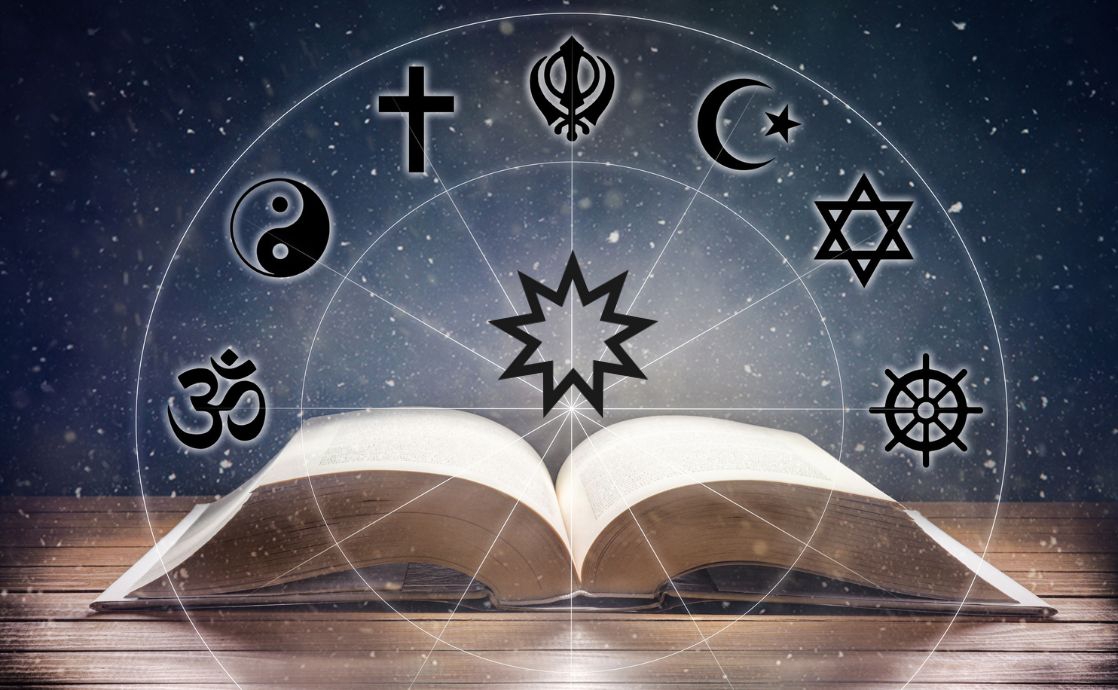The views expressed in our content reflect individual perspectives and do not represent the authoritative views of the Baha'i Faith.
An online friend I’ll call Jesse told me that I seemed repelled by his assertion that the Baha’i Faith was syncretism — that is, as he put it, “basically a rather modern blend of a number of popular religions.” ”
While I find it amusing that people I’ve never met are so certain of my personal feelings and beliefs, his assertion isn’t repulsive — it’s simply incorrect.
I was raised in Christian churches with the idea that God had spoken to humankind once directly — through Jesus Christ. (Twice if you count Moses, more if you count the other major Old Testament prophets.)
Multiple pastors told me that “other” religions were nothing like Christianity, and their founders nothing like Christ. They insisted that if I were to read the so-called scriptures of these religions, I would find nothing but lies fabricated by counterfeit prophets. Moses and Christ had revelations from God, they insisted, but these others had simply cobbled together acquired knowledge; they’d created syncretic religions — combining different beliefs and schools of thought, in other words.
RELATED: The Central Touchstones in Christian Scripture
When I encountered the Baha’i Faith at the age of 19, Baha’u’llah’s assertions challenged me. The Baha’i teachings said that if I read these “other” scriptures — as opposed to considering only each faith’s modern doctrine — I would find that view of religion turned on its head. To be honest, I wasn’t just challenged by Baha’u’llah, I was outraged by Baha’u’llah, and set about trying to disprove what he had to say.
In order to do that, over time, I read the Bhagavad Gita, the Dhammapada and other Buddhist texts, the Qur’an, even parts of the Zend Avesta, the teachings of Deganawida and Fu Xi. I also revisited my own Christian scriptures, reading them as if I had not been taught what they meant from a series of church pulpits. I tried to read them as if discovering them for the first time — without external commentary.
Ultimately, I found Baha’u’llah’s proposal to be correct. Every one of those great spiritual teachers taught the same basic spiritual principles. They may have stressed different aspects of faith, focusing on detachment or love or justice, and they may have brought different social teachings and laws given the exigencies of the time, but their essential message was always the same:
- There is only one universal supreme Spirit who created the entire universe and, as Krishna put it, “in silence, is loving to all.”
- The only way to reach this Spirit is to love our fellow creatures. Full stop.
Sounds simple, yes? It’s really hard in practice, for obvious reasons.
The differences in these historic religions today exist because of the differences in us. Jesus made a point of this when he told the Pharisees that Moses gave them the law of divorce because of the hardness of their hearts, not because God changed His mind. In fact, he stressed that, from God’s point of view, “from the beginning, it was not so.” (Matthew 19:8)
Buddha also commented on this in the Sanskrit Dhammapada:
And the Tathagata [Buddha] is the same to unto all beings, differing only in so far as all beings are different. … He is the same to all, and yet, knowing the requirements of every single being, He does not reveal Himself to all alike.
Baha’u’llah, likewise, wrote that:
The All-Knowing Physician hath His finger on the pulse of mankind. He perceiveth the disease, and prescribeth, in His unerring wisdom, the remedy. Every age hath its own problem, and every soul its particular aspiration. The remedy the world needeth in its present-day afflictions can never be the same as that which a subsequent age may require.
A good instructor teaches at the leading edge of their students’ capacity, while pushing them toward growth. It’s the same way with the holy messengers sent by God. They appear in the spiritually darkest spot on the globe and teach to the capacity of their audience, while setting a higher bar for those who grasp that they are really being asked to go beyond. In this way, they raise us up from where we were before.
Something I took away from my study of religion was the consistency of the spiritual tenets of these teachers. I did not expect to find that. It did not tally with my worldview, with my understanding of my own faith, with what I had been taught.
This realization of the very essential unity of religion turned my entire belief system on its head and forced me to rethink my relationship with God, with Christ, and with my faith.
Another source of unease and amazement: I saw that the diversity and depth of Baha’u’llah’s knowledge and how he employed it would have been astounding even if he’d had a robust, world class education, but he did not have that education.
Baha’u’llah was taught what any Persian nobleman of his time was taught: the Qur’an, Persian literature, land and village management, the politics and diplomacy of the court of the Shah. He didn’t spend his years memorizing the holy books of world religions, or studying world history, or following the nascent sciences. Yet, he displayed knowledge on a breadth and depth of subjects he had neither reason nor opportunity to know. Nor did he draw from the current beliefs and practices of the historical faiths to inform his teachings — he drew from the Source of those faiths, and I (and anyone else) can hold the evidence of that in our own hands and read it with our own eyes.
RELATED: What My “Yes” to Baha’u’llah Means for My “Yes” to Jesus
One of Baha’u’llah’s most potent treatises, called The Book of Certitude, covers prophecies from both the Bible and the Qur’an, treats spiritual and intellectual subjects related to the struggle to seek truth and understand reality, and contains some of the most beautiful and profound writing I’ve ever read.
Baha’u’llah wrote The Book of Certitude in the space of two days and two nights beginning on or about January 15, 1861, in response to questions from the uncle of his predecessor, the Bab. At the time, he was a prisoner of the Persian government, lodged in Baghdad.
Countering Jesse’s assertion that the Baha’i Faith is a modern blend of popular religions, Baha’u’llah’s Book of Certitude deals in great part with the subject of the progressive revelation of God’s spiritual guidance to humanity. It is, itself, evidence against the charge of syncretism — and for the real-world existence of revelation.
Abdu’l-Baha, Baha’u’llah’s eldest son, spoke of the concept of progressive revelation at a May 28, 1912 talk at the Metropolitan Temple, a New York synagogue:
… the divine religions of the holy Manifestations of God are in reality one, though in name and nomenclature they differ. Man must be a lover of the light, no matter from what dayspring it may appear. He must be a lover of the rose, no matter in what soil it may be growing. He must be a seeker of the truth, no matter from what source it come. Attachment to the lantern is not loving the light. … Absolute verities, no matter in what book they be recorded, must be accepted. … If we investigate the religions to discover the principles underlying their foundations, we will find they agree; for the fundamental reality of them is one and not multiple. By this means the religionists of the world will reach their point of unity and reconciliation.
I can vouch for the truth of Abdu’l-Baha’s assertion because I personally put it to the test. In this series of essays, I’ll explain how and why.
You May Also Like
Comments

















Direct link: mayabohnhoff(dot)com (forward slash)speaking-of-faith